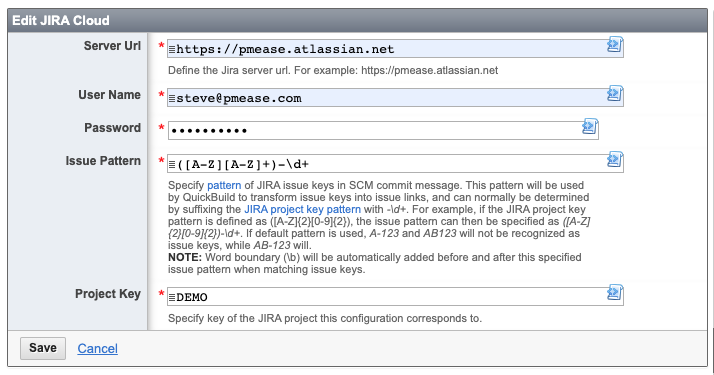<< View previous version | view page history | view next version >>
Since QuickBuild 10, a two-way solution is provided to integrate with Atlassian JIRA Cloud. The integration features:
- Hyperlink the JIRA keys in commit messages to corresponding JIRA Cloud pages
- Generate an issues report from commit messages
- Create an issue to JIRA based on a customized step condition
- View SCM changes for each issue
- View related builds for each issue
- View related builds for each project
QuickBuild Side
JIRA Cloud Issue Tracker
To collect the issues information, you need first add JIRA Cloud tracker setting in QuickBuild. The tracker setting can be defined from Configuration settings -> Issue Tracker -> JIRA Cloud:
![]()
Then, fill in the required information:

The token can be generated from: https://id.atlassian.com/manage/api-tokens![]()
See more about API token at the following page:
https://confluence.atlassian.com/cloud/api-tokens-938839638.html![]()
Jira Cloud Issues Report
After doing these, the issues keys mentioned in commit messages will be hyperlinked:

and an issues report tab will be displayed in Build tab:

Create Issue Step
You can also create a issue based on build status or any conditions you want by adding a Create Issue Step just like any other steps in configuration workflow.
The only thing we want to mention here is that if you have some custom fields which are required when creating issue, you need specify them in Extra Attributes:

The format for extra attributes is JSON, for example:
{
"customfield_10001": "my custom status",
"customfield_10010": {
"type": "obj",
"name": "test"
}
}